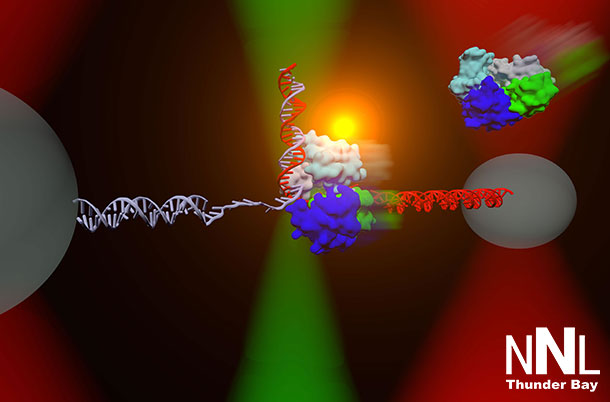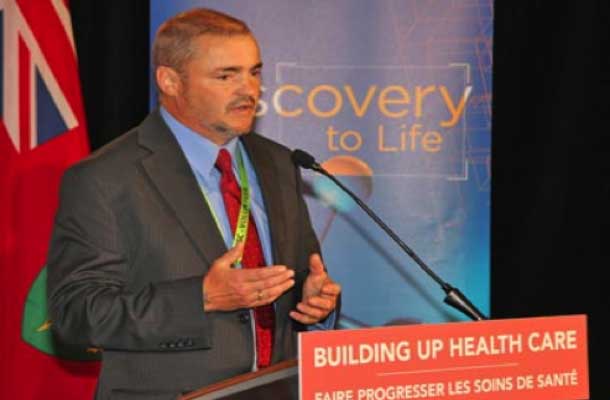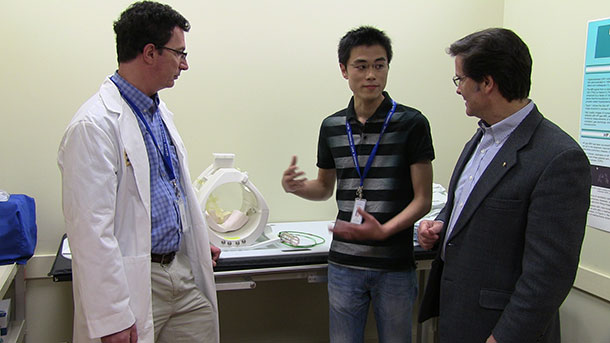
 THUNDER BAY – Health – HIV infection that was impacting a two-year-old child is functionally gone. The toddler, born with HIV infection and treated with antiretroviral drugs beginning in the first days of life no longer has detectable levels of virus using conventional testing despite not taking HIV medication for 10 months. This information is according to findings presented at the Conference on Retroviruses and Opportunistic Infections (CROI) in Atlanta on March 4 2013.
THUNDER BAY – Health – HIV infection that was impacting a two-year-old child is functionally gone. The toddler, born with HIV infection and treated with antiretroviral drugs beginning in the first days of life no longer has detectable levels of virus using conventional testing despite not taking HIV medication for 10 months. This information is according to findings presented at the Conference on Retroviruses and Opportunistic Infections (CROI) in Atlanta on March 4 2013.
HIV infection ‘functionally gone’
This is the first well-documented case of an HIV-infected child who appears to have been functionally cured of HIV infection—that is, without detectable levels of virus and no signs of disease in the absence of antiretroviral therapy.
The announcement has offered hope for defeating HIV infection. In Thunder Bay, Aids Thunder Bay has been working hard to educate the public on the danger of AIDS, and HIV.
Further research is needed to understand whether the experience of the child can be replicated in clinical trials involving other HIV-exposed children, according to the investigators.
The case study was presented at the CROI meeting by Deborah Persaud, M.D., associate professor of infectious diseases at the Johns Hopkins Children’s Center in Baltimore, and Katherine Luzuriaga, M.D., professor of pediatrics and molecular medicine at the University of Massachusetts Medical School in Worcester. These two pediatric HIV experts led the analysis of the case.
The National Institute of Allergy and Infectious Diseases (NIAID) and the Eunice Kennedy Shriver National Institute of Child Health and Human Development (NICHD), both components of the National Institutes of Health, provided funding that supported the work of Drs. Persaud and Luzuriaga and other investigators involved in the analysis of the case.
“Despite the fact that research has given us the tools to prevent mother-to-child transmission of HIV, many infants are unfortunately still born infected. With this case, it appears we may have not only a positive outcome for the particular child, but also a promising lead for additional research toward curing other children,” said NIAID Director Anthony S. Fauci, M.D.
In July 2010, the child was born prematurely in Mississippi at 35 weeks, to an HIV-infected mother who had received neither antiretroviral medication nor prenatal care.
High risk baby treated almost immediately
Because of the high risk of exposure to HIV, the infant was started at 30 hours of age on liquid antiretroviral treatment consisting of a combination of three anti-HIV drugs: zidovudine, lamivudine, and nevirapine. The newborn’s HIV infection was confirmed through two blood samples obtained on the second day of life and analyzed through highly sensitive polymerase chain reaction (PCR) testing. PCR tests conducted on separate occasions that indicate the presence of HIV in an exposed infant are considered to have confirmed the diagnosis of infection.
The baby was discharged from the hospital at 1 week of age and placed on liquid antiretroviral therapy consisting of combination zidovudine, lamivudine and co-formulated lopinavir-ritonavir. This drug combination is a standard regimen for treating HIV-infected infants in the United States.
Additional plasma viral load tests performed on blood from the baby over the first three weeks of life again indicated HIV infection. However, by Day 29, the infant’s viral load had fallen to less than 50 copies of HIV per milliliter of blood (copies/mL).
The baby remained on the prescribed antiretroviral treatment regimen until 18 months of age (January 2012), when treatment was discontinued for reasons that are unclear. However, when the child was again seen by medical professionals in the fall of 2012, blood samples revealed undetectable HIV levels (less than 20 copies/mL) and no HIV-specific antibodies. Using ultrasensitive viral RNA and DNA tests, the researchers found extremely low viral levels.
Today, the child continues to thrive without antiretroviral therapy and has no identifiable levels of HIV in the body using standard assays. The child is under the medical care of Hannah Gay, M.D., a pediatric HIV specialist at the University of Mississippi Medical Center in Jackson. Researchers will continue to follow the case.
“This case suggests that providing antiretroviral therapy within the very first few days of life to infants infected with HIV through their mothers via pregnancy or delivery may prevent HIV from establishing a reservoir, or hiding place, in their bodies and, therefore, achieve a cure for those children,” said Dr. Persaud.






